Firstly, uphold the principle of Party leadership and building the Army as a political force, a fighting force absolutely loyal and trustworthy to the Party, State and people; thoroughly grasp and well implement the resolutions of the Party, Politburo, and Central Military Commission (CMC) on building the Army towards modernization.
The Party's leadership is the decisive factor in all victories of the Vietnamese revolution. The Party leads the Vietnam People's Army (VPA) absolutely and directly in all aspects. The leadership is concentrated and unified in the Central Executive Committee, directly and regularly in the Politburo and the Secretariat. This is a principle, with a regular nature, that decides the fundamental issues of Army building, the maturity and victory of the Army. The great victory in the Spring of 1975 further affirmed that the Party's leadership of the Army is an immutable, consistent and continuous principle, ensuring that the Army is always a political force, an absolutely loyal fighting force of the Party, the State and the people, successfully completing its historical mission before the nation.
Waging the all-people, all-out war under the leadership of the Party, our army and people have continuously won important victories, our position and strength have become increasingly stronger. After the Paris Agreement (January 27, 1973), the Politburo directed the General Staff to establish a Central Group to develop a strategic plan to liberate the South. The 21st Central Conference (October 1973) and the expanded Politburo Conference (from December 18, 1974 to January 8, 1975) supplemented, completed and approved the basic strategic plan to liberate the South in two years (1975-1976).
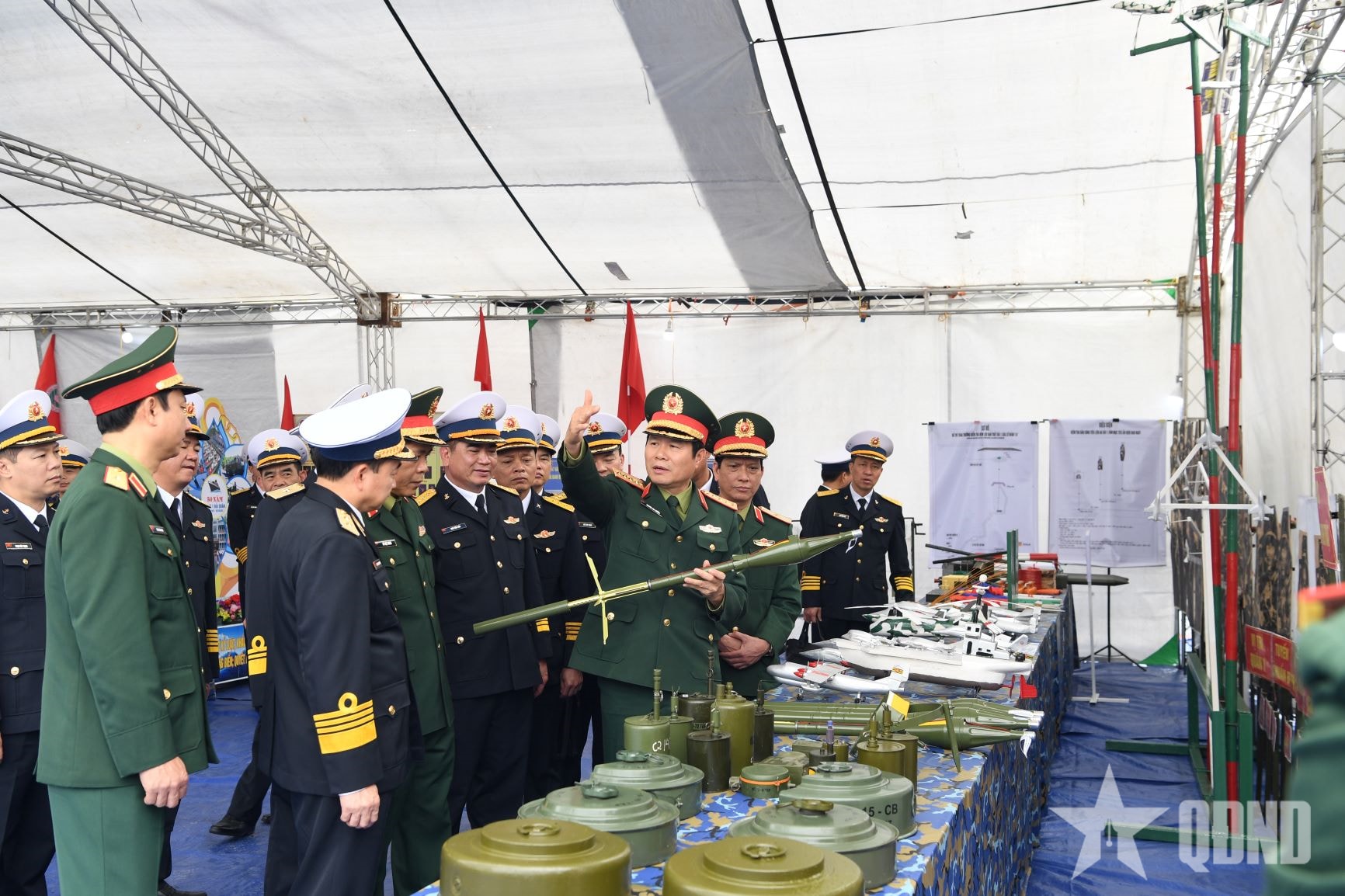 |
General Nguyen Tan Cuong inspects initiatives, improvements and training materials of Brigade 147, Naval Region 1, March 2025. Photo: PHU SON |
After the victory of the "pressure point" attack at Buon Ma Thuot in the Central Highlands Campaign, on March 18, 1975, the Politburo met and affirmed: The great strategic opportunity had come and determined to carry out the strategic general offensive, to be completed in 1975. The following week, the Politburo determined to complete the task of liberating Saigon before the rainy season and decided to establish the Southern Support Council, mobilizing the strength of the whole country into the strategic decisive battle. After Tri Thien-Hue and Da Nang were liberated, on March 31, 1975, the Politburo met and advocated: Grasping the strategic opportunity even more, with the guiding ideology of speed, boldness, surprise, and sure victory, determined to carry out the general offensive-general uprising as soon as possible, preferably in April, without delay. When approving the determination and plan to liberate Saigon-Gia Dinh (named the Ho Chi Minh Campaign), the Politburo emphasized: The comprehensive offensive plan must ensure that once launched, the attack must be carried out quickly and continuously, and continuously until total victory.
Implementing the strategic determination of the Politburo and the Central Military Commission, the military wings, with the combined strength of the armed forces and arms, successively broke the defense system around Saigon, directly attacking the brain and the most important force of the puppet government and army of Saigon, successfully ending the resistance war against the US to save the country.
The current situation and the coming time pose high demands for the cause of building the Army, strengthening national defense, and protecting the Fatherland; upholding the principle of the Party's leadership of the Army to build the Army towards modernization, meeting the requirements and tasks of building and protecting the Fatherland in the new situation. The Central Military Commission and the Ministry of National Defense continue to thoroughly grasp and seriously and effectively implement the Resolution of the 13th National Congress and the Party's directives and resolutions, promoting the results of building a lean, compact, and strong Army, striving to build a revolutionary, disciplined, elite, and modern People's Army by 2030; Resolution 18 dated October 25, 2017 of the Party Central Committee on continuing to innovate and reorganize the apparatus of the political system to be lean, effective, and efficient; Resolution of the 8th Central Committee, Session XIII on the Strategy for Protecting the Fatherland in the new situation; Resolution 05 dated January 17, 2022 of the Politburo and Resolution 230 dated April 2, 2022 of the Central Military Commission on the organization of the Vietnam People's Army for the 2021-2030 period and the following years. Based on the Party's correct policies and orientations, synchronously deploy solutions to build a lean, compact, and strong Army; each level proactively develops plans, has a roadmap and specific steps in adjusting the organization and staffing of each block towards lean, compact, and strong, with a reasonable and synchronous structure, reducing intermediaries, and moving towards modernization. In the implementation process, it is necessary to thoroughly grasp and concretize the two strategic tasks of building and firmly defending the socialist Vietnamese Fatherland. Regularly maintaining and strengthening the Party's leadership is an objective necessity in building a modern Army, ensuring that the Army is always ready to fight and fight victoriously, worthy of being a trustworthy political force, an absolutely loyal fighting force, the core of building all-people national defense, and excellently completing the task of protecting the Fatherland in the new situation.
Second, uphold the principle of building a strong Army in terms of politics, ideology, ethics, organization and personnel.
Building a politically strong Army is a matter of principle in building the Party's revolutionary armed forces, carried out throughout the process of building, fighting and maturing the Army. The success of our Party in the resistance war against the US to save the country was to build a system of Party organizations in the Army that is strong in politics, ideology, ethics, organization and cadres, mobilizing the political-spiritual strength of the entire Army as the core for the entire people to fight the enemy. At the end of January 1973, the General Department of Politics of the Vietnam People's Army issued Directive 01: "Strengthening political work in the armed forces in the face of new situations and tasks" to promote the strength of political work at all levels, maintain and promote the revolutionary spirit, unify thoughts and actions, the armed forces are truly the revolutionary fighting force of the Party. In early January 1975, the General Department of Politics implemented the Project "Political Work", which included the following content: "Political encouragement to make cadres and soldiers correctly assess the enemy-us situation, clearly recognize new favorable opportunities and new tasks, promote the ideology of attack, continuous attack, high determination, and achieve even greater victories." Preparing the entire army to enter the general offensive and uprising, on March 7, 1975, the General Department of Politics issued Directive 02 on political work for units in the battlefield, clearly stating the general tasks and main requirements to be achieved: Thoroughly grasp the situation of revolutionary tasks, especially the new situation of the revolution in the South, strongly promote the spirit of victory, raise the determination to fight of the troops, improve political and ideological level, organizational level, capacity, working style, improve the quality of party organizations, youth organizations, in which focusing on the Party committees at all levels and the contingent of cadres and Party members, contributing to the greatest victory.
Implementing the determination of the Politburo, the Central Military Commission, the Ministry of National Defense, the main army corps, combat arms, security forces, special forces, and local armed forces entered the battle with the highest determination, "speed, boldness, surprise, and sure victory" to charge forward, gain victory for the strategic decisive battle, liberate the South, and unify the country.
Applying and promoting that lesson in building a strong Army in terms of politics, ideology, ethics, organization and cadres, meeting the requirements of advancing to modernity, it is necessary to continue to thoroughly grasp and strictly implement Resolution 51 of the 9th Politburo, Resolution 513 dated November 17, 2005 of the Central Military Party Committee (now the Central Military Commission). At the same time, well carry out the work of Party building and rectification, building a truly clean and strong Army Party organization, improving leadership capacity and combat strength. Effectively implement the policies of the Party, State, Central Military Commission, Ministry of National Defense on military, national defense, building a lean, compact, strong Army advancing to modernity. Continue to thoroughly grasp and implement Conclusion 01 dated May 18, 2021 of the Politburo on promoting the study and following of Ho Chi Minh's ideology, ethics and style; Resolution 847 dated December 28, 2021 of the Central Military Commission on promoting the qualities of Uncle Ho's soldiers, resolutely fighting against individualism in the new situation; Regulation 144 dated May 9, 2024 of the Politburo on revolutionary ethical standards of cadres and party members in the new period...
The entire army continues to thoroughly grasp and effectively implement Directive No. 2423-CT/QUTW dated November 9, 2023 of the Standing Committee of the Central Military Commission on innovation and improvement of the quality of political education in the new period; Regulations on the work of managing military ideology, grasping and orienting public opinion in the Vietnam People's Army. Proactively fight to firmly protect the Party's ideological and cultural battlefield in the Army, defeating the plots and tricks of "depoliticizing" the Army by reactionary forces. Focus on effectively implementing the work of inspection, supervision, prevention and combating degradation in political ideology, ethics, lifestyle, "self-evolution", "self-transformation" within the organization. Build a contingent of cadres at all levels, especially at the strategic and campaign levels, with a reasonable structure and quantity, playing a core, pioneering and exemplary role in leading and directing all aspects of activities of agencies and units. Building a contingent of cadres and soldiers with steadfast and firm political will, fully aware of the position, meaning and importance of building a politically strong Army, ensuring the whole army has one will, implementing the building of a lean, strong, and modern Army.
Third, build and perfect the organization of forces and staff of agencies and units, with a reasonable and synchronous structure, meeting the requirements and tasks in the new situation.
To achieve the Great Victory in Spring 1975, under the leadership of the Party, directly the Central Military Commission, the Ministry of National Defense - the General Command, our Army had made thorough and comprehensive preparations from organization, staffing to human resources, logistics... In July 1973, the Standing Committee of the Central Military Commission decided on a number of issues regarding the organization of the Armed Forces in the new situation, determining to build a three-armed armed force, a standing army with high combat quality, develop a strong militia and self-defense force, and a powerful reserve force; on that basis, it is necessary to rectify the organization one step at a time, improve the quality of the Army according to the motto of a regular and modern People's Army. From here, the main army corps were successively established: Army Corps 1 (October 24, 1973), Army Corps 2 (May 17, 1974), Army Corps 4 (July 20, 1974), Group 232 (equivalent to a corps, February 1975), Army Corps 3 (March 26, 1975). When the opportunity came, implementing the strategic determination of the Politburo and the Central Military Commission, the Ho Chi Minh Campaign Command used 4 army corps (1, 2, 3, 4) and Group 232 to attack in 5 directions, hitting the key targets of the enemy's nerve center, winning a decisive victory for the strategic battle.
In addition, immediately after the Politburo approved the strategic plan to liberate the South, the General Staff urgently completed the plan and deployed plans to grasp the enemy and the situation; completed and supplemented the operational plan for each battlefield and the plan to protect the North... The work to ensure the strategic offensive plan was carefully prepared and deployed on the battlefields. The General Staff directed the mobilization of troops; directed the synchronous development of the three types of troops, especially the combined arms units, both fighting and consolidating the organization to conduct major campaigns. These were important factors contributing to the victory of the General Offensive and Uprising in the Spring of 1975.
From the practice of building and organizing the use of combat forces in the 1975 Spring General Offensive and Uprising, in order to build a modern Army, it is necessary to build and perfect the organization of forces and the staffing of agencies and units, with a reasonable and synchronous structure at all stages. On the basis of the new staffing table, agencies and units quickly adjust, consolidate and stabilize the organization in the direction of being lean, compact and strong, ensuring good performance of all tasks in new conditions. Continue to effectively implement the Ministry of National Defense's Plan on the organization of the Vietnam People's Army for the period 2021-2030 and the following years, especially Conclusion 126 dated February 14, 2025 of the Politburo and the Secretariat on a number of contents and tasks to continue to arrange and streamline the organization of the political system in 2025; Conclusion No. 127-KL/TW dated February 28, 2025 of the Politburo and the Secretariat on the implementation of research and proposals to continue to reorganize the apparatus of the political system. From the strategic level to the grassroots level, it is necessary to adjust the organization and staffing of each block according to its functions and tasks in accordance with the national defense and people's war guidelines. At the same time, develop and promulgate regulations on the functions, tasks, powers, and working relationships for agencies and units with new organizational and staffing adjustments; develop organizational and staffing tables in peacetime and wartime; plan to mobilize forces and organize a number of strategic reserve units to be highly combat-ready, in accordance with the determination to protect the Fatherland, meeting the requirements and combat tasks in all situations.
Fourth, effectively carry out logistics and technical work (HC-KT) and develop the defense industry (DID) to meet the requirements and tasks of protecting the Fatherland.
In preparation for the strategic plan, the General Staff coordinated with the focal points of the Ministry of National Defense and the branches, agencies of the Party and the State, to calculate and supplement the plan to prepare forces and technical equipment; urge the expansion and upgrading of the strategic and campaign road network; build information lines and oil pipelines to the South; build bases, organize warehouse systems, and on-site stations... The Ministry of National Defense assigned the General Department of Logistics to directly survey the battlefields, develop a 3-year support plan (1973-1975); direct the battlefields to build on-site logistics facilities, develop production, consolidate the warehouse and wharf systems, and improve the ability to receive and transport goods to serve combat requirements in the new situation. To effectively carry out the work of ensuring equipment, technical management, military technical research and directly managing defense production enterprises, on April 5, 1974, the Central Military Commission issued Resolution 39 on the establishment of the General Department of Engineering.
To ensure victory in the strategic decisive battle, along with concentrating large main forces and technical weapons, the Politburo and the Central Military Commission directed the mobilization of goods and means of transport from the North, the Central Highlands, and Zone 5 to provide sufficient supplies for the campaign. Along with the strategic sea and land transport routes, campaign and strategic logistics opened 2 more transport routes to Loc Ninh and Long Khanh, 6 campaign transport routes to the B2 logistics warehouses in charge, the oil and gas pipeline extended from Bu Dop to Loc Ninh, combined with on-site logistics exploitation... The success of the work of ensuring HC-KT for the forces contributed significantly to the victory of the Ho Chi Minh Campaign.
From the lesson of ensuring HC-KT in the Great Victory of Spring 1975, applied to building a lean, strong, modern Army, it is necessary to effectively carry out HC-KT work and develop defense industry, meeting the requirements of the task of national defense in the new situation. Thoroughly grasping the guidelines and viewpoints of the Party, the Central Military Commission, and the Ministry of National Defense on enhancing the potential and strength of the country's military and national defense, the entire army continues to effectively implement Resolution 1658 dated December 20, 2022 of the Central Military Commission on Army logistics work until 2030 and the following years; Resolution 1656 dated December 20, 2022 of the Central Military Commission on leading technical work until 2030 and the following years; Resolution No. 08-NQ/TW dated January 26, 2022 of the Politburo on promoting the development of defense industry to 2030 and the following years; Law on defense industry, security and industrial mobilization... The entire army synchronously implements projects and plans (especially key projects) on defense industry.
In addition, it is necessary to promote the combined strength, effectively exploit resources, perfect the mechanism and methods of ensuring logistics and material resources, build a strong reserve mobilization force of HC-KT; the potential and HC-KT posture of defense areas are solid, especially in strategic and key areas, ready to mobilize and ensure national defense situations. Build a proactive, self-reliant, self-reliant, dual-use, modern defense industry; the defense industry must master advanced, modern technology, ensure self-repair, improvement, and production of relatively modern and advanced weapons, equipment, and technical means.
Building a modern army requires combining internal and external resources, in which internal resources are the main and decisive factor, while at the same time taking advantage of external resources for development.
Fifth, improve the effectiveness of defense diplomacy work, contributing to creating position and strength to build the Army and protect the Fatherland early and from afar.
During the resistance war against the US to save the country, Vietnam always received enthusiastic and effective support, encouragement and assistance from international friends, especially socialist countries, along with the Vietnam-Laos-Cambodia fighting alliance. This increased Vietnam's strength to achieve the Great Victory of Spring 1975.
Applying that lesson in building a modern Army , it is necessary to improve the effectiveness of defense diplomacy and military cooperation in accordance with the Party's foreign policy, on the basis of international law, according to the principles of equality, respect, and mutually beneficial cooperation, ensuring the highest national interests, following the motto "more friends, less enemies", "with the unchangeable, adapt to all changes". Firmly adhere to the "4 no's" defense policy (not participating in military alliances; not allying with one country to fight another; not allowing foreign countries to set up military bases or use Vietnamese territory to fight against other countries; not using force or threatening to use force in international relations), maintaining a peaceful, stable, cooperative environment for national development, strengthening defense and security; not being passive or surprised; preventing the risk of conflict and confrontation, avoiding isolation and dependence.
Accordingly, continue to thoroughly grasp and effectively implement the Resolution of the 8th Central Committee, Session XIII on the National Defense Strategy in the new situation; Conclusion 53 dated April 28, 2023 of the Politburo, Resolution 2662 dated February 26, 2024 of the Central Military Commission on international integration and defense diplomacy until 2030 and the following years. The Central Military Commission and the Ministry of National Defense determined: Continue to consolidate and improve the effectiveness of defense diplomacy, expand military cooperation and properly handle defense cooperation relations with countries around the world, especially countries in the region, especially strategic partners. To protect the Fatherland early, from afar, and defend the country before it is in danger, by peaceful means, in international cooperation, it is necessary to raise the level of multilateral defense diplomacy, proactively participate and be responsible in peacekeeping, search and rescue activities, and defense, military, and security cooperation forums in the region and internationally. Defense diplomacy is a pillar of the Party's foreign affairs, State diplomacy and people's diplomacy are actively, proactively, flexibly, practically, and effectively deployed, contributing to building trust, maintaining peace, stability, enhancing the position and image of the country, and the prestige of the Vietnam People's Army in the international arena, making a direct and important contribution to the success of the cause of national renewal, development, and defense.
The Vietnam People's Army is a revolutionary army organized, led, educated and trained by our Party and President Ho Chi Minh; it is a political force absolutely loyal to the Party, the State and the people. Building a modern Army is a major and correct policy of the Party and the State, ensuring that the Army has enough strength to firmly protect the socialist Fatherland of Vietnam, respond promptly and effectively to non-traditional security challenges; at the same time, successfully fulfill its role as the core force in building a strong national defense. 50 years have passed, the lessons from the Great Victory of Spring 1975 are still valuable, need to continue to be studied, applied and promoted in building a revolutionary, disciplined, elite and modern Army.
General NGUYEN TAN CUONG, Member of the Party Central Committee, Member of the Central Military Commission, Chief of the General Staff of the Vietnam People's Army, Deputy Minister of National Defense
* Readers are invited to visit the 50th Anniversary of the Great Victory of Spring 1975 section to see related news and articles.
Source: https://baodaknong.vn/dai-thang-mua-xuan-1975-bai-hoc-ve-xay-dung-quan-doi-tien-len-hien-dai-250929.html





![[Photo] Nearly 3,000 students moved by stories about soldiers](https://vphoto.vietnam.vn/thumb/1200x675/vietnam/resource/IMAGE/2025/5/17/21da57c8241e42438b423eaa37215e0e)




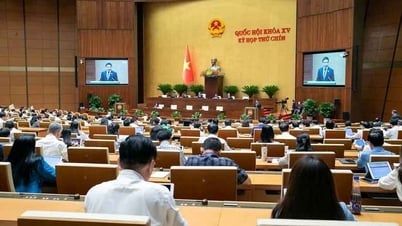

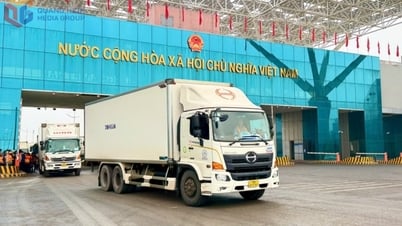

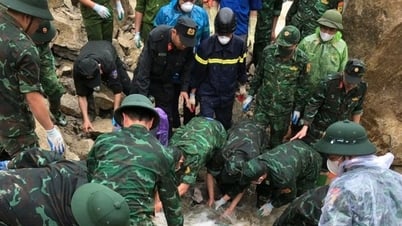
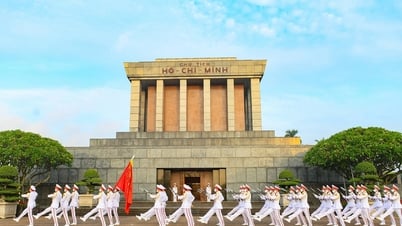





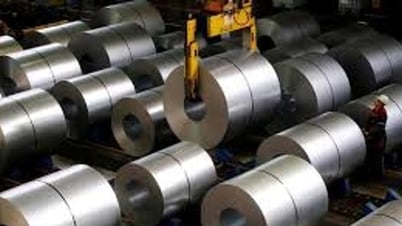
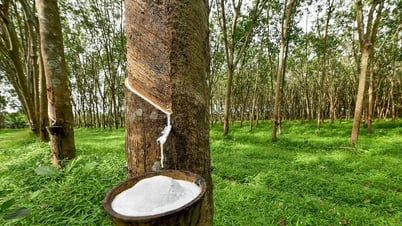

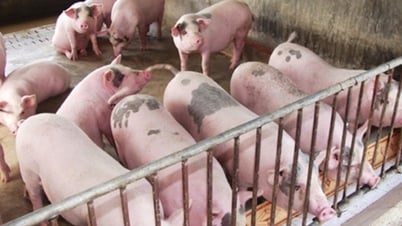















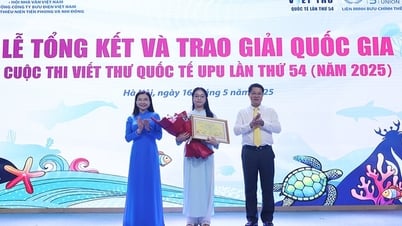

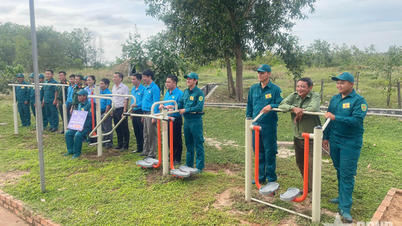

















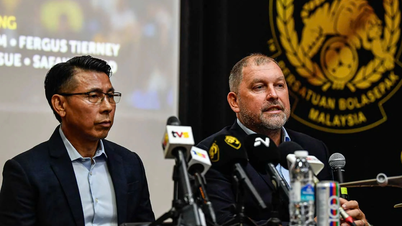
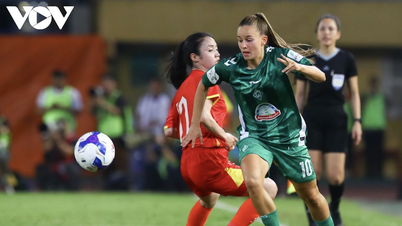

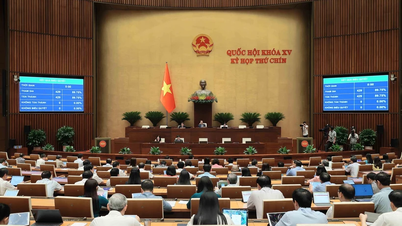








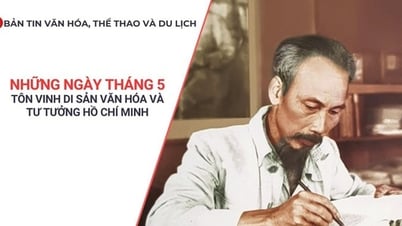

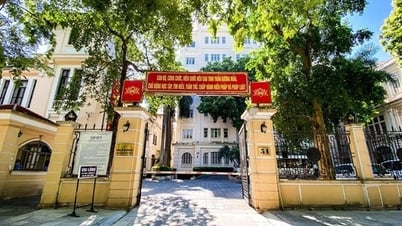


![[Infographic] Numbers about the 2025 High School Graduation Exam in Dong Thap Province](https://vphoto.vietnam.vn/thumb/402x226/vietnam/resource/IMAGE/2025/5/17/c6e481df97c94ff28d740cc2f26ebbdc)
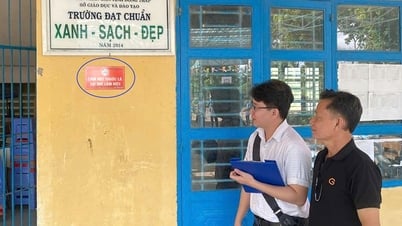
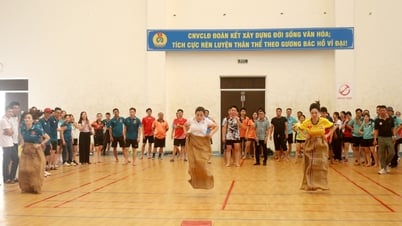
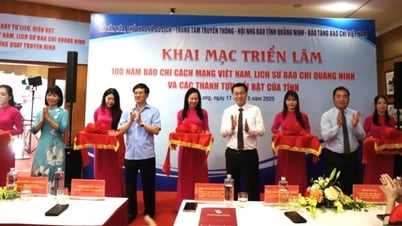
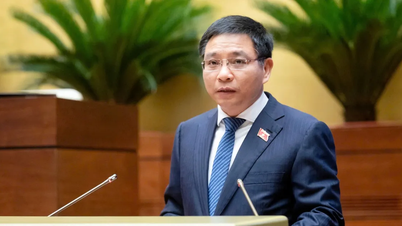

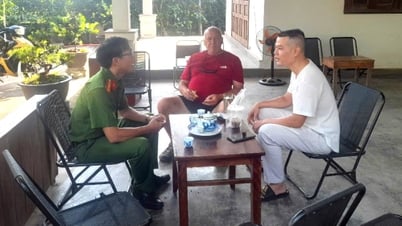











Comment (0)